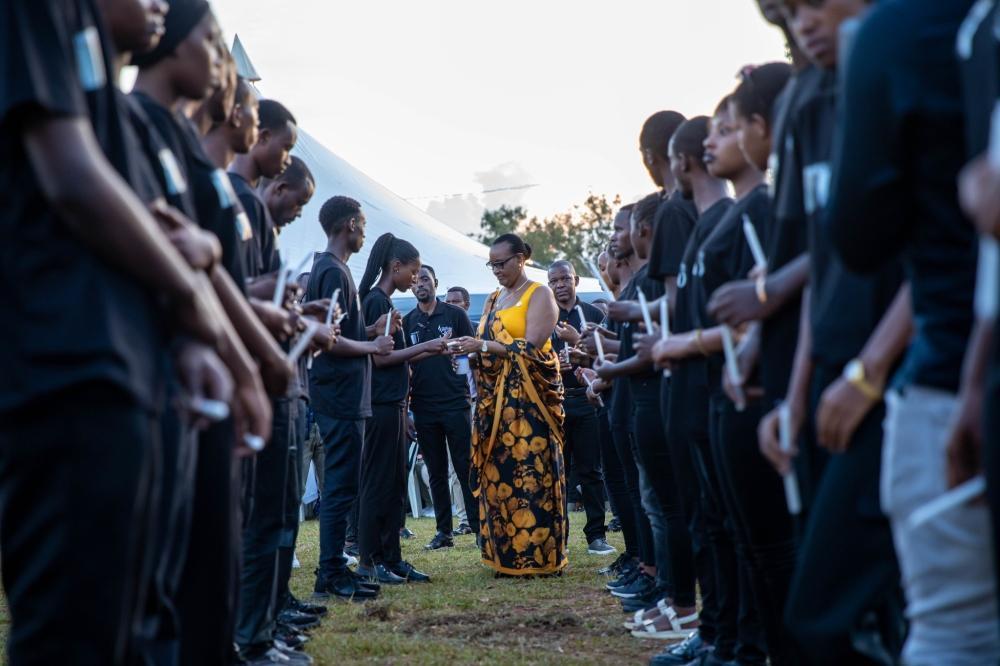Africa-Press – Rwanda. During the 30th commemoration of the 1994 Genocide against the Tutsi, President Paul Kagame stated that “Genocide is populism in its purified form.” This statement carries profound ramifications, particularly when contextualized within the 1994 genocide which was, above all, the fruit of a promoted by European missionaries and immediately supported by Western powers who, a few decades before the birth of Hutu Power, had fought Hitler in Europe.
For a start, upon the establishment of Rwanda as a nation, the categorization of individuals as Tutsi or Hutu was practically infeasible. Primarily, identification was rooted in clan affiliations before transitioning to a sense of national identity. This transition was exemplified by expressions such as “I am from Abasinga, Abacyaba, Abashambo, Abatsobe, Abakono, Abashingwe, Abenengwe… But above all, I am Rwandan.”
During the process of fostering national cohesion, these diverse clans established definitive principles to be adhered to without question. Among these principles was “Ubuse,” a sacred and inviolable bond of friendship between individuals that prohibited the mistreatment of the impoverished (Gutsirora), the breach of societal harmony (Kuzirura), or the accumulation of wealth at the expense of others (Kweza).
However, in 1934, the Rwandan people were subjected to a census where, for the first time, the Hutu and Tutsi were identified by inserting the ethnic tags in the identity documents of Rwandan citizens. Mind you, before the arrival of Belgium, a Hutu could become a Tutsi, and vice versa, depending on his possession not only of livestock but also of land.
The very summary distinction between Hutu and Tusti made by the Belgians followed the nascent theories of racial genetic characteristics adopted by the Nazis with the extreme consequences that we know of.
In 1931, an ethnic identity was formally mandated, with colonial administrative records methodically delineating individuals’ “ethnic” classifications, reminiscent of the Nazi categorization of Jewish identity in Germany. Each Rwandan citizen would be obliged to possess an ethnic identity card. The stark division between “Hutu” and “Tutsi,” serving as the foundation for subsequent ethnic cleansing during the post-independence era leading up to the 1994 genocide against the Tutsi, was established by Belgian authorities based on racial stereotypes.
Then came the Bahutu Manifesto which was conceived and created in Bukavu, eastern DR Congo by specialists of the White Fathers in collaboration with Congolese bishops and signed by Grégoire Kayibanda and eight other Hutu leaders. Historically, the Nazi virus defeated by the Soviet Union 12 years earlier, resurfaced in Bukavu and Goma, in the “Congo Free State”, the private property founded in 1885 by King Leopold I and passed under the jurisdiction of Belgium in 1908. From Bukavu and Goma, the African-style Nazi virus spread to the Great Lakes Region and materialized in Rwanda.
The place of origin of the Bahutu Manifesto was historically and politically appropriate. In DR Congo, the first genocide in the modern history of Africa took place between 1885 and 1902. Ten million deaths caused by the Belgian royal family to impose control over rubber plantations and copper mines which transformed a small, marginal and very poor European country in a global colonial power.
The authors of the Bahutu Manifesto, through historical falsification, identify the Hutu as victims of the Tutsi settlers. The thesis is developed thanks to the theory of “the colonialism in two phases.” The first phase is that of the Tutsi ruling over the Hutu and the second is that of the Belgians on Rwandans in general. These authors make clear that the second phase of colonialism has saved Rwanda. “Without the Europeans we would have been condemned to inhuman exploitation, and we must choose between the lesser of two evils: that European colonialism, a progressive colonialism and good compared to the racial supremacy of the Nilotic.”
Against this backdrop, it was no surpise that the vicar-apostolic of Rwanda, André Perraudin, encouraged his secretary, Kayibanda, to publish the ‘Bahutu Manifesto’ in 1957, and to found the Hutu Social Movement (later the Party of the Hutu Emancipation Movement, Parmehutu), which advocated racial ‘confrontation’ with the “Tutsi invaders”. As a result, the troubles began in 1959 under Belgian Governor Andrè Preud’homme with a revolt by the Hutu, directed not against the Belgian colonial administration but against their Tutsi compatriots. This “social revolution” was supported by Belgium’s special military resident Colonel Guillaume Logiest (the colonial regime’s top-ranking official), a man who openly sympathised with Parmehutu and with Kayibanda.
The direct consequence of the Bahutu Manifesto was the clear distinction between Hutu and Tutsi which led to an ethnic radicalization of Rwandan politics. The Manifesto is to be considered as the starting point of the political actions of Hutu leaders who had nothing to envy of their Nazi counterparts. A few months after the publication of the document, some of the Hutu leaders who signed the Bahutu Manifesto founded ethnic political parties based on racial hatred. This was the case of Kayibanda who founded the Muhutu social movement which became PARMEHUTU, in 1959. Joseph Habyarimana Gitera found the Association for the Social Promotion of the Masses (APROSOMA).
In the same period, the campaign for the local elections began. The later saw the rising of an extremist Hutu political class which arose ideologically from the Bahutu Manifesto, which would manage power for 30 long and painful years till the 1994 genocide against the Tutsi.
Over the decades following independence, this Manifesto assumed a role of reference for the Hutu in power and further ideological elaborations would transform it into the fundamental text of racial justification for the policies of repression of the Tutsi which would culminate with the theory of “Hutu Power” by Juvenal Habyarimana in the 1970s and with the “Final Solution” plan conceived and implemented in the 1990s.
The 1973 coup of Habyarimana allowed him to play the ethnic card to isolate the Hutu elite of Gitarama, Butare, and Gikongoro regions accused of being too “moderate” to the Tutsi. The regime of Habyarimana introduced the ethnic national identity cards (as at the time of the Belgians). The IDs were used to determine access to school, health, and the world of work, through a system of racial quotas which attributed to the Tutsi only 9%.
In a nutshell, the 1994 genocide against the Tutsi in Rwanda was neither sudden nor the result of a collective killing spree. It was the conclusion of a populist policy of racial domination inspired by a mixture of pseudo social claims and Nazi theories of racial supremacy (the Bahutu Manifesto) conceived way back in 1957 by fanatical Belgian missionaries supported by local priests and politicians who immediately glimpsed the potential of this doctrine to cloud the minds of Rwandans and seize power.
This populist hatred ideology continues to have consequences till today, where Imbonerakure (CNDD-FDD militia) in Burundi and FDLR in eastern DR Congo, continue to commit genocidal atrocities against innocent civilians, drawing ideological justifications from the very principles outlined in the Bahutu Manifesto of 1957.
For More News And Analysis About Rwanda Follow Africa-Press






